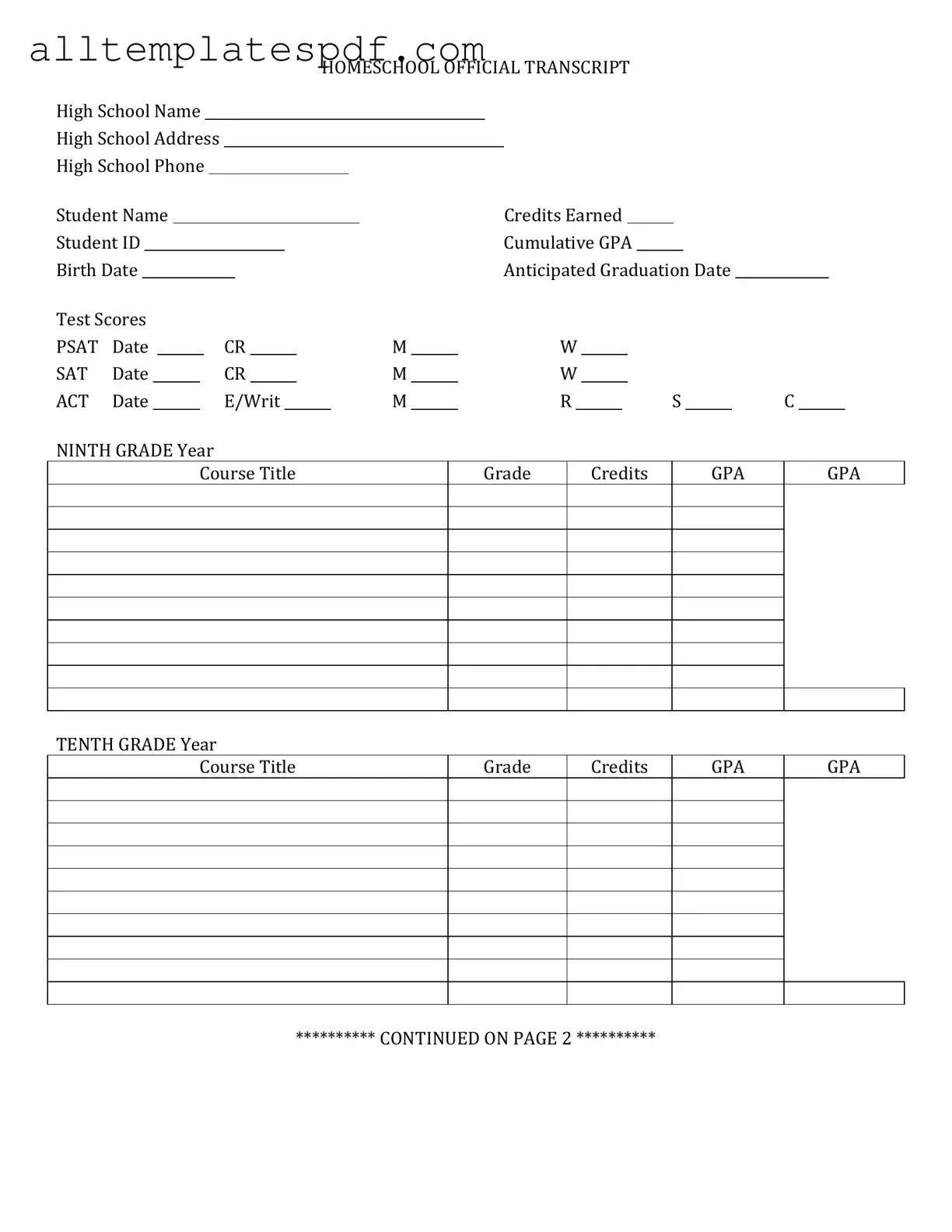Completing a High School Transcript form can be a straightforward process, but many individuals encounter pitfalls along the way. One common mistake is providing inaccurate personal information. Students often overlook details like their full name, date of birth, or student ID number. This can lead to confusion and delays in processing the transcript.
Another frequent error involves the omission of essential courses or grades. Some students may forget to include classes taken during summer sessions or dual enrollment courses. This oversight can result in an incomplete academic record, which may impact college admissions or job applications.
Inaccurate grade entries also pose a significant challenge. When filling out the form, students might misremember their grades or fail to double-check them against official records. Such inaccuracies can lead to misunderstandings about a student's academic performance.
Additionally, many individuals neglect to sign and date the transcript form. A missing signature can render the document invalid, causing unnecessary delays in its acceptance by schools or employers. Always remember that a signed transcript is essential for it to be considered official.
Another mistake is failing to follow the submission guidelines. Each school or institution may have specific requirements regarding how the transcript should be submitted. Ignoring these instructions can lead to complications, such as the transcript not being accepted or processed properly.
Lastly, not allowing enough time for processing can be a critical error. Students often underestimate how long it will take to receive their transcripts. It is wise to request transcripts well in advance of deadlines to ensure they arrive on time.
